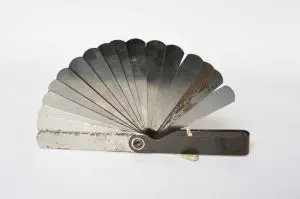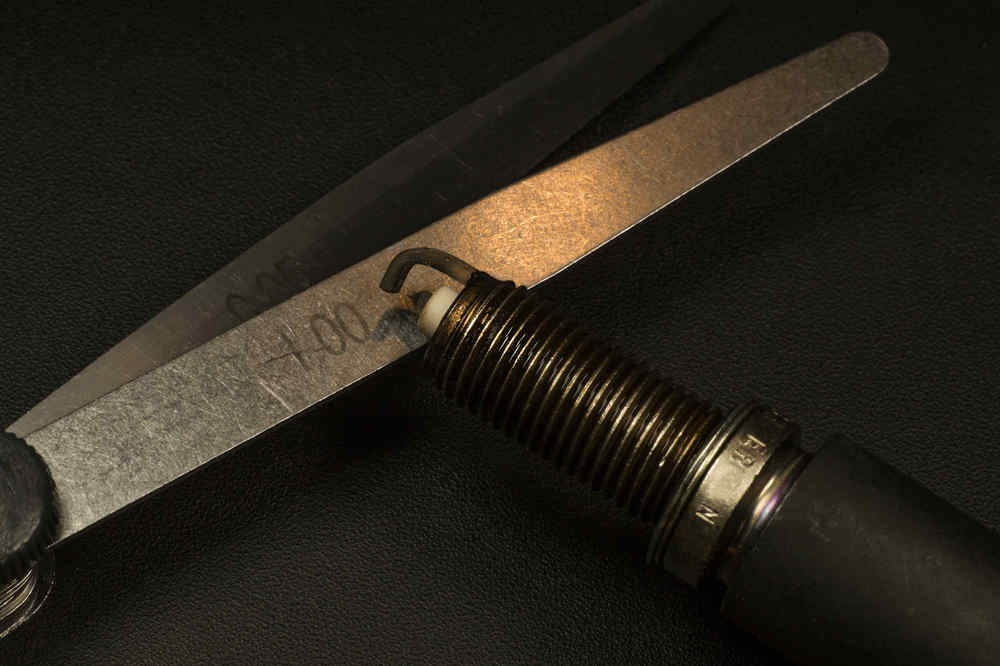Recognizing the feeler gauge types can help you decide which feeler gauge is best for you. There are several models of feeler gauges that you should know. Picking the right one can solve your job easier. There are straight, tapered, dual graduation, offset, strip, brass, and go-no-go models.
1. Straight Feeler Gauge

This is the most commonly used feeler gauge. As the name suggests, the shape of the blade is straight. The width of the blades remains the same until the curved edge of the tip area.
2. Tapered Feeler Gauge

It’s almost similar to the straight feeler gauge. The tapered look at the tip area makes them vividly different. When tackling a condition where the gap is too small in terms of its width and thickness dimension, a tapered feeler gauge is suitable for that.
3. Metric and Imperial Combination Graduation
It means two feeler gauges combine in a single tool. Generally, these two feeler gauges are connected in such a way. One is graduated in inch and the other is graduated in mm. Sometimes a single feeler gauge, even though it has been graduated with double markings, cannot provide graduation order as expected. Here is this type of feeler gauge that comes into play.
4. Offset Feeler Gauge
We frequently face a though condition where it’s too hard to get the blade into the gap. The blade may be too rigid and you are using the thicker ones. When using the offset type, the problem is over. It has a permanent bent tip that will help you insert the blade into the gap.
5. Brass Feeler Gauge
Your feeler gauge is sticking into due to the magnetic field around the measurement area. By using the brass feeler gauge, it’s not reactive anymore. You can easily slide the blade through the gap. Learn about the material. If it’s stainless steel, there is a type of stainless steel that is magnetic and otherwise.
6. Go-No-Go Feeler Gauge
A go-no-go feeler gauge blade has a different thickness between the base and tip parts. The base is commonly thicker while the tip is commonly thinner. We never find otherwise.
7. Feeler Strip
A feeler gauge comes in a set of blades, while a feeler strip comes in a single blade. They are actually the same, to measure the gap size. But the difference resides at the number of blades used. Using a feeler strip is more affordable and simple but not as complete as a feeler gauge with multiple blades.

